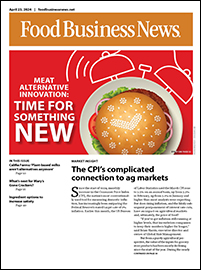FOSTER CITY, CALIF. — Alterations to traditional dayparts will be a key trend shaping the food and beverage industry this year, according to Mattson.
The findings come from the food and beverage insights company’s 2025 Macro Movements trends report, which analyzes the major patterns emerging across the foodservice and retail sectors.
The report’s “Daytime & Daypart Disruption” trend sees changes to consumer eating patterns.
“With people able to live a more flexible life, given working from home trends, they’re seeking flexibility in what they eat and when,” said Barb Stuckey, chief new product strategy officer at Mattson, in a January webinar.
One of the notable changes that has resulted from the COVID-19 pandemic is the decrease in the morning and lunchtime occasions among foodservice operators. Stuckey pointed to the 9 am to 2 pm window in particular, which she said has seen a significant decrease in traffic since 2019.
“Restaurant lunches used to be something that was really critically profitable and important to QSR operators and other food away from home operators,” Stuckey said. “It's now a fraction of what it used to be, and the biggest growth is happening in new occasions that have sprouted up at both ends of the day to replace the old school three meals a day of breakfast, lunch and dinner.”
New daypart opportunities are cropping up in the morning snack and after dinner snack segments, however. The change is being fueled by consumers’ focus on affordability as these dayparts have an average check amount that is between $3 and $5 lower than lunch or dinner. Innovations in this daypart include Subway’s line of footlong cookies. Chains like Crumbl Cookies and Insomnia have found success capitalizing on the nighttime snacking daypart with their sweet snacking concepts, leading to the opening of 101 new stores and 55 new stores, respectively, in 2024.
Stuckey also noted that some operators are using beverage applications to tap into the snacking movement. She pointed to the emergence of the dirty soda trend, mixing a soda with indulgent additions such as sweet cream, candy pieces or coconut milk, as an example of the drinks as a snack movement.
Consumers shifting toward snacks as a meal replacement, seen in trends like “girl dinner,” also is playing a role in disrupting these dayparts.
“The other thing that is impacting this daytime and daypart disruption is 24-hour-a-day snackification and making a snack into a meal or augmenting a meal with a snack,” Stuckey said. “With the inflation that we have experienced, (consumers) are looking for ways to cut more time and money from meal preparation. Snacks also have really moved forward and provide more functionality than they used to.”
Stuckey noted that 37% of meals had a snack addition in 2024, up from 29% in 2010. Gen Z in particular has become particularly associated with increased snacking, but Stuckey explained that all generations are engaging in snacking behaviors more and especially with breakfast. Snacks replacing the entirety of a traditional lunch meal is also significantly more common than just 10 years ago, Stuckey said.
“So, what exactly is enabling people to not have to partake in the big burger or pasta or chicken or taco meal in the middle of the day?” she asked. “The answer is very clear to us, and that is protein.”
Stuckey said protein has been a key factor in helping consumers remain satiated, citing formulations that may use protein fortification in the beverage space and high-protein ingredients in traditional snack applications, for example.



